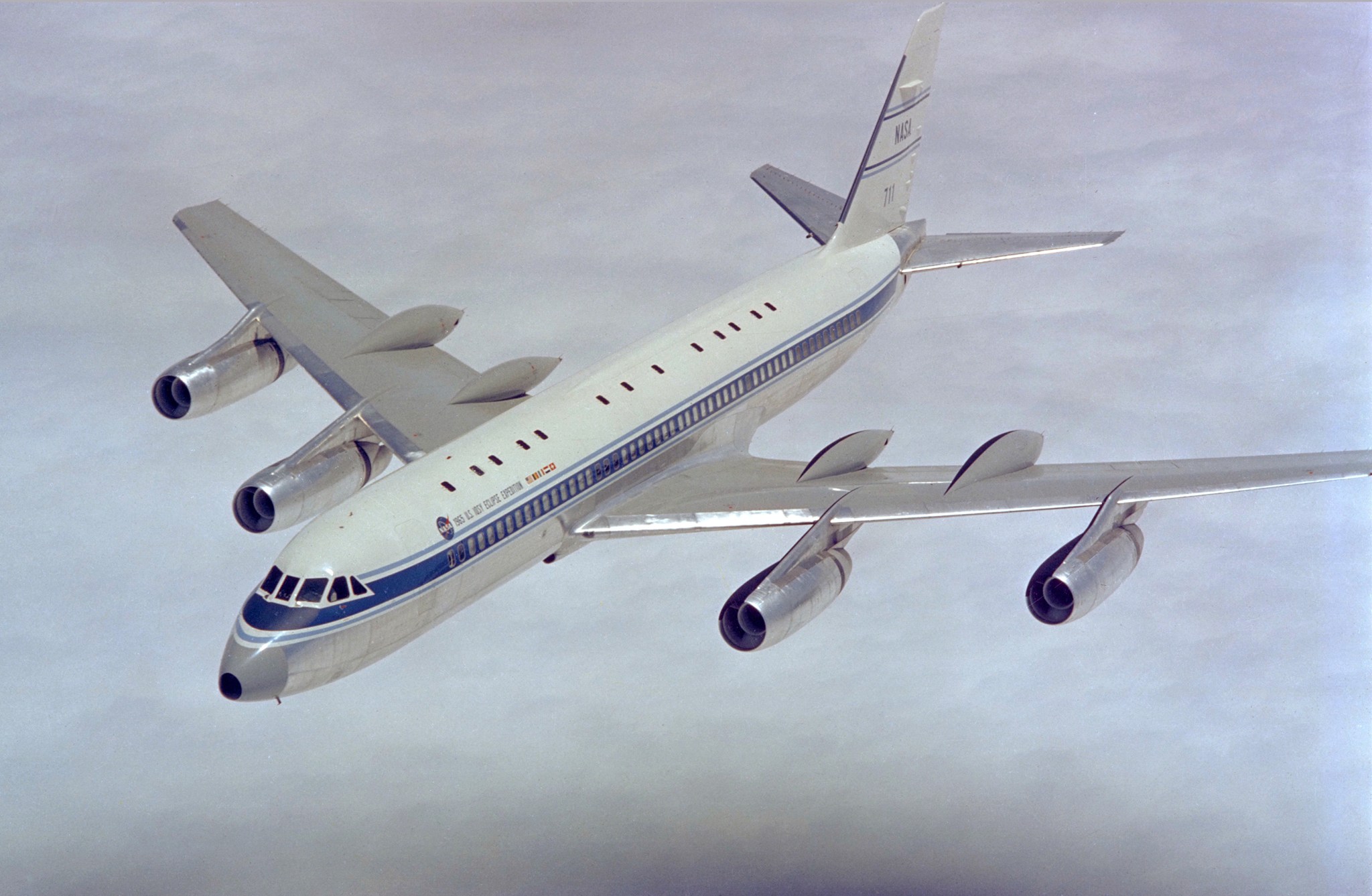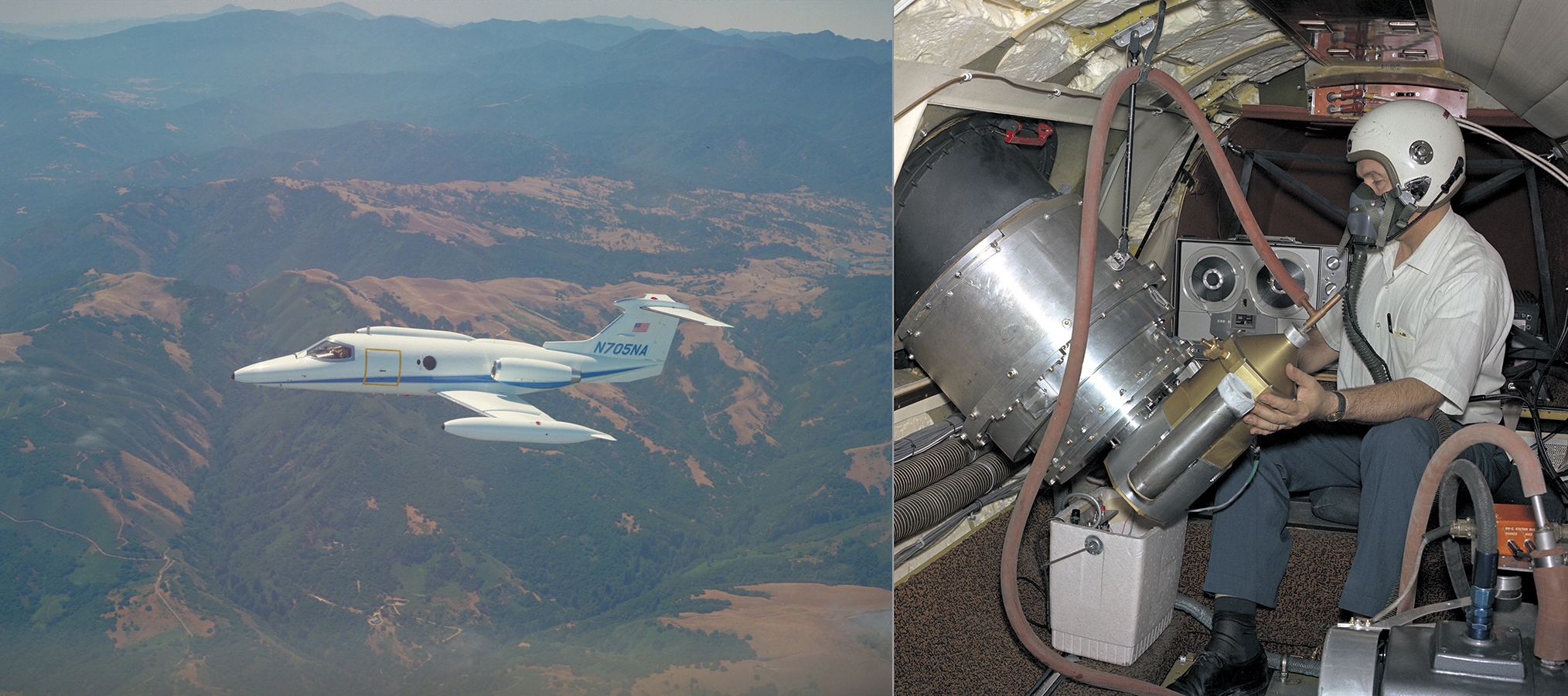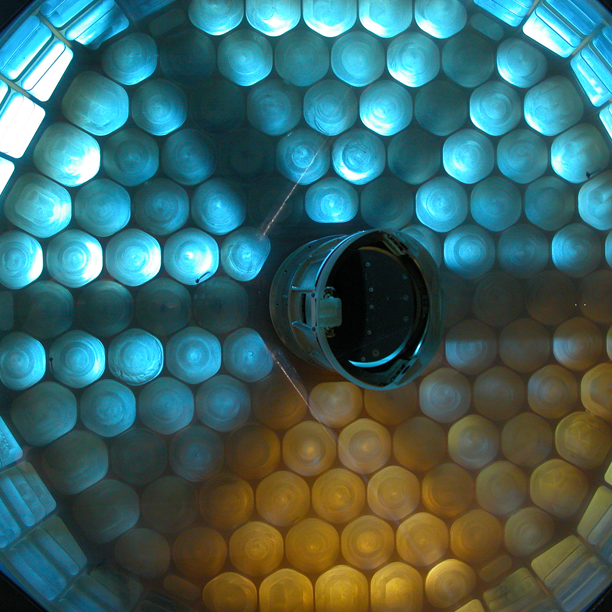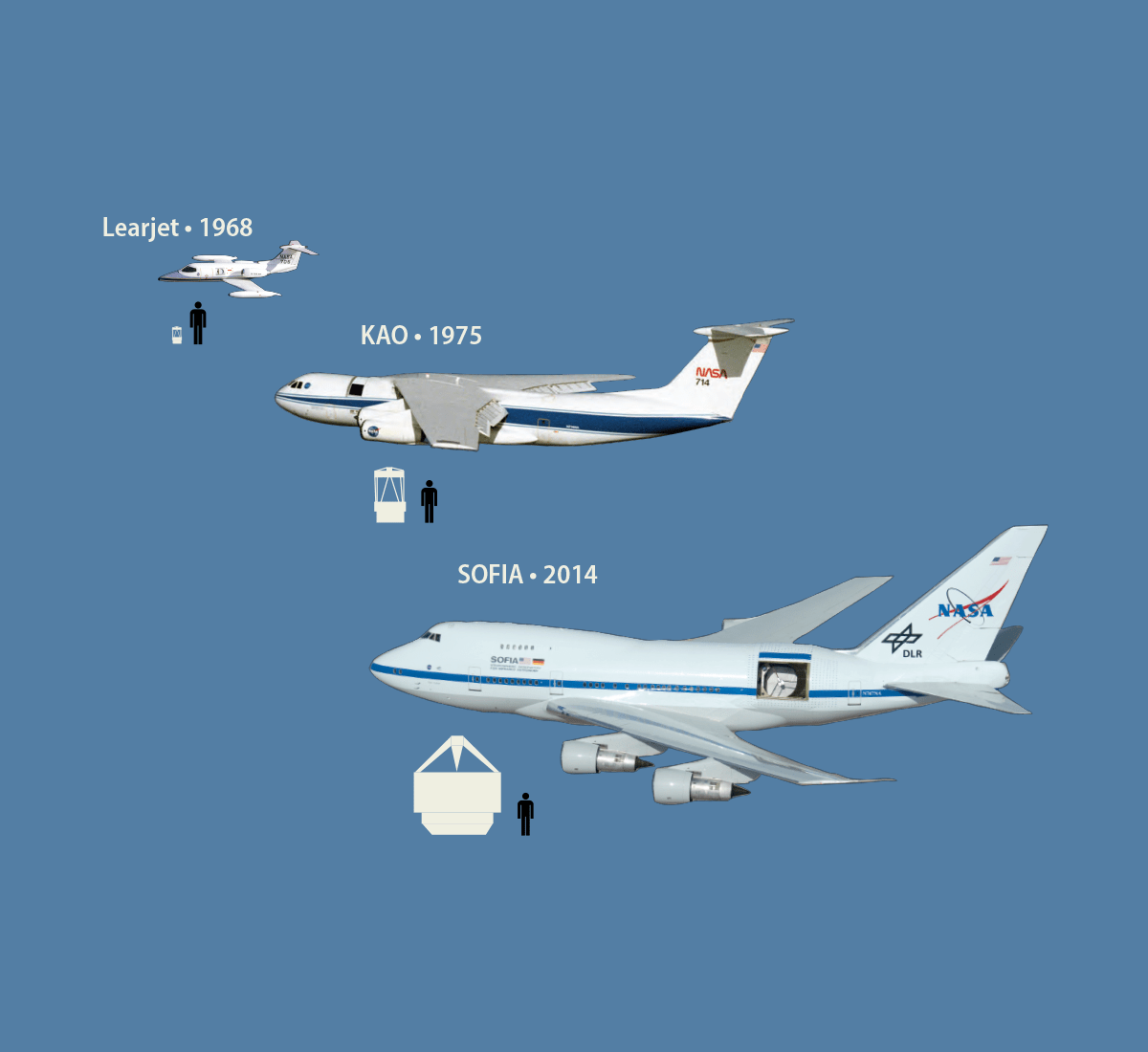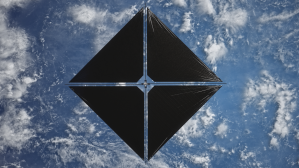Sixty years ago, in 1958, NASA was founded as the National Aeronautics and Space Administration. The agency has a long history of using airplanes to study space. Flying at high altitudes puts telescopes above the water vapor in Earth’s atmosphere that blocks certain types of light, like infrared, from reaching ground-based telescopes. Airborne observatories can also go anywhere to conduct observations, enabling researchers to study transient events, such as the eclipse-like events called occultations to learn about distant planets and objects. When airborne observatories land after each flight, the telescope instruments, such as specialized cameras, can be upgraded or serviced, and new ones can be built to harness new technologies — which is not possible on most space-based telescopes.
NASA paved the way for airborne astronomy in 1965 by flying a modified Convair 990 aircraft to study a solar eclipse from inside the path of totality. In 1968, astronomers used 12-inch telescopes in the cabins of Learjet aircraft to study objects like Venus using infrared light.
The work on the Learjet Observatory led to the development of NASA’s Kuiper Airborne Observatory, or KAO, a converted C-141 cargo aircraft that carried a 36-inch reflecting telescope. Named after the planetary scientist Gerard Kuiper, it operated from NASA’s Ames Research Center in California from 1975 to 1995. Scientists used the KAO for solar system research, galactic and extra-galactic observations, and even studied the space shuttle’s heat shield in infrared light as it re-entered Earth’s atmosphere. Discoveries made from the Kuiper Airborne Observatory included:
- Pluto’s atmosphere
- Rings around Uranus
- A ring of star formation around the center of the Milky Way
- Complex organic molecules in space
- Water in comets and in Jupiter’s atmosphere
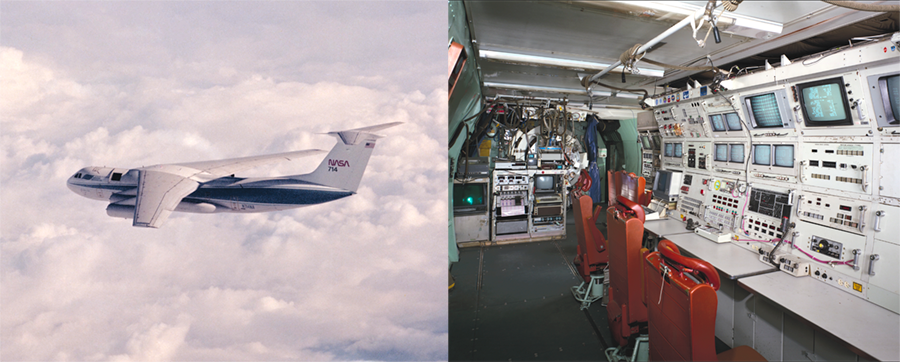
The Kuiper Airborne Observatory was decommissioned in 1995 to enable the development of a flying observatory with a larger, more powerful infrared telescope — the Stratospheric Observatory for Infrared Astronomy (SOFIA).
NASA and the German Aerospace Center (DLR) jointly operate SOFIA. They chose a Boeing 747SP aircraft to carry the largest airborne telescope to date, at 106 inches (2.7 meters) in diameter. NASA modified and maintains the aircraft — which once flew for both Pan American World Airways and United Airlines — that now carries the telescope, its support systems, and the mission crew. The DLR designed, built and maintains the telescope which operates while flying at altitudes up to 45,000 feet at more than 650 mph.
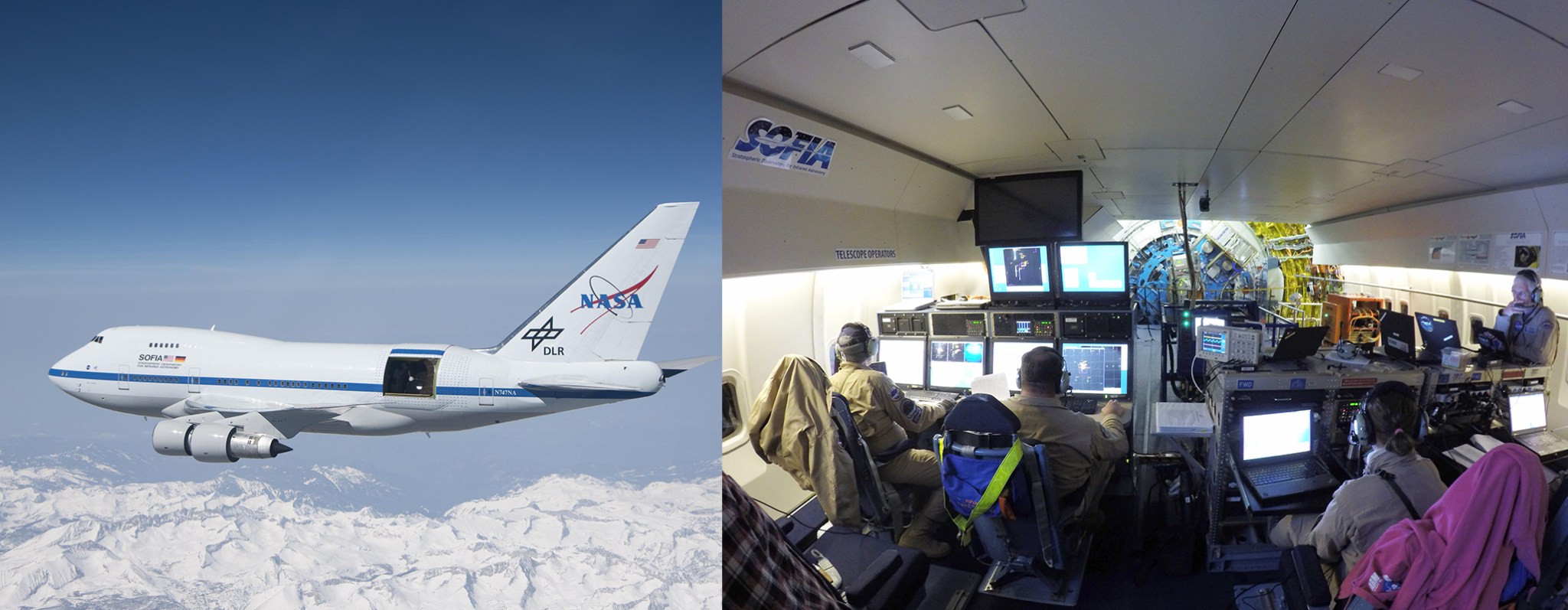
Aircraft modifications included cutting the hole for the telescope cavity, adding a new pressure bulkhead to separate the pressurized cabin from the cavity, and adding airflow ramps around the cavity that allow the plane to fly normally while the telescope door is open. Inside the cabin, mission control systems required for the observatory replaced the seats from the aircraft’s days as a passenger plane. The modifications and test flights took place in Waco, Texas and at NASA’s Armstrong Flight Research Center Hangar 703. About 20 people are aboard each flight to operate the aircraft, control the telescope and collect astronomical data.
The German-built telescope is made of a unique glass material that has almost zero thermal expansion, so the mirror is unaffected by the temperature changes between the warm ground-level air and the cold stratosphere. The back of the telescope has a honeycomb design to make it approximately 80 percent lighter than most telescopes of this size. An intricate stabilization system isolates the telescope from the aircraft’s movement, keeping it fixed on its observing target during overnight flights. SOFIA reached full operational capacity in 2014 and flies three or more times per week for 10 hours at a time.
Astronomers are using SOFIA to study many different kinds of astronomical objects and phenomena, including:
- Star birth and death
- The formation of new solar systems
- Identification of complex molecules in space
- Planets, comets and asteroids in our solar system
- Nebulae and the ecosystems of galaxies
- Celestial magnetic fields
- Black holes at the center of galaxies
NASA’s Ames Research Center in California’s Silicon Valley manages the SOFIA program, science and mission operations in cooperation with the Universities Space Research Association headquartered in Columbia, Maryland, and the German SOFIA Institute (DSI) at the University of Stuttgart. The aircraft is operated and maintained from NASA’s Armstrong Flight Research Center Hangar 703, in Palmdale, California.





























